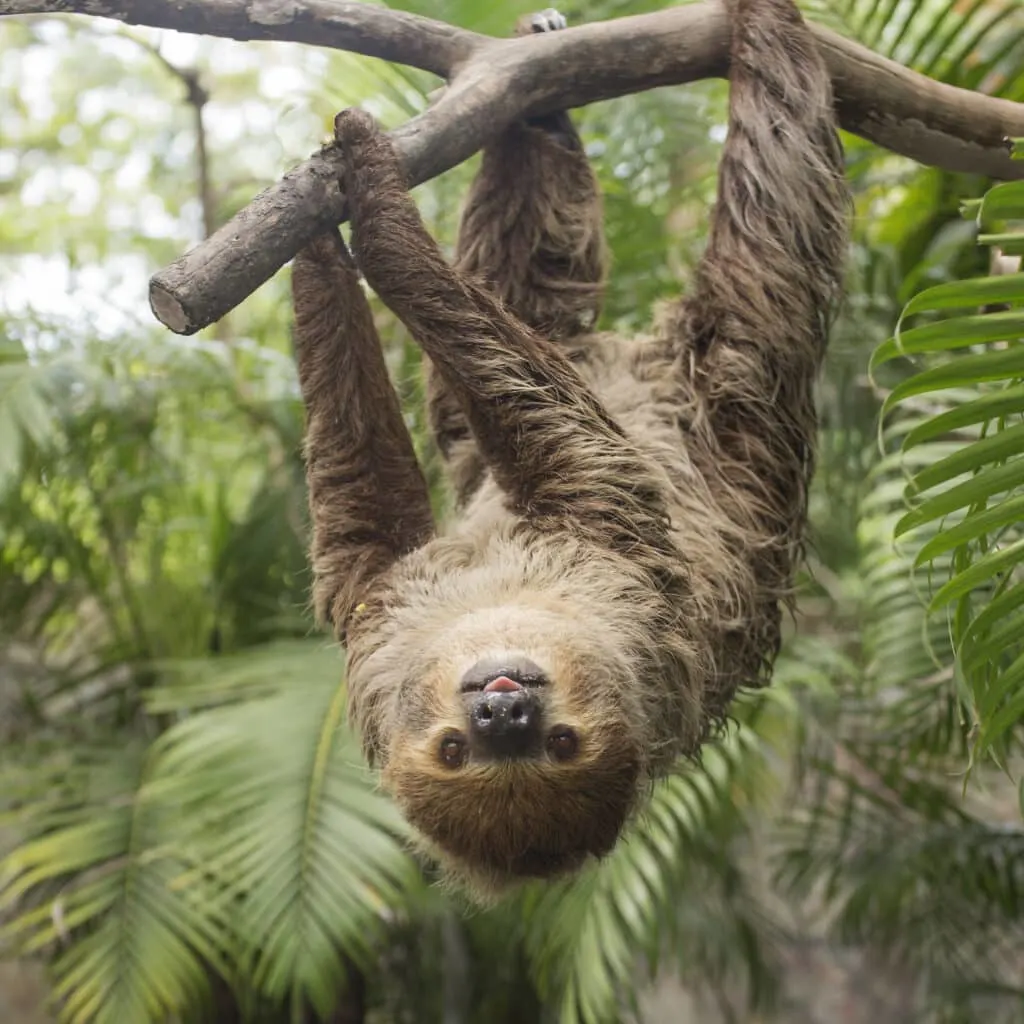To demonstrate how slow sloths are, picture it being the 2036 Animal Olympics. The stadium is soaring under the sunshine, elephants indulge in the grass under ‘Stand B,’ and lions sit lavishly in the royal box – monkeys take the rafters.
The 100-meter sprint for a gold medal is about to start, and we’ve got cheetahs taking all but two lanes belonging to a sloth and a snail. The gun pops, and the felines dart off into the distance, leaving the two behind.
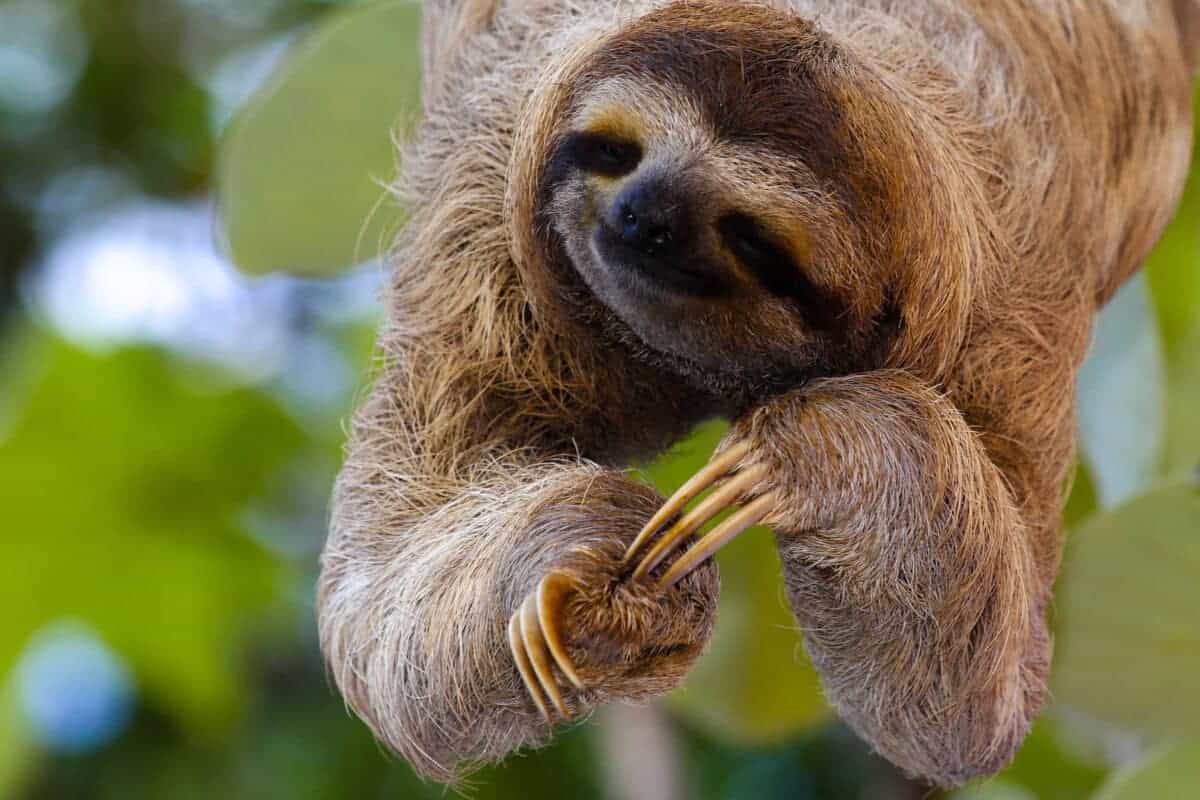
The sloth and snail battle it out in what would surely be the slowest 100m ever recorded, but who wins? The snail. That’s how slow sloths are.
The last two sentences are scientifically proven – the rest, not so much. Okay, now for the solemn reading.
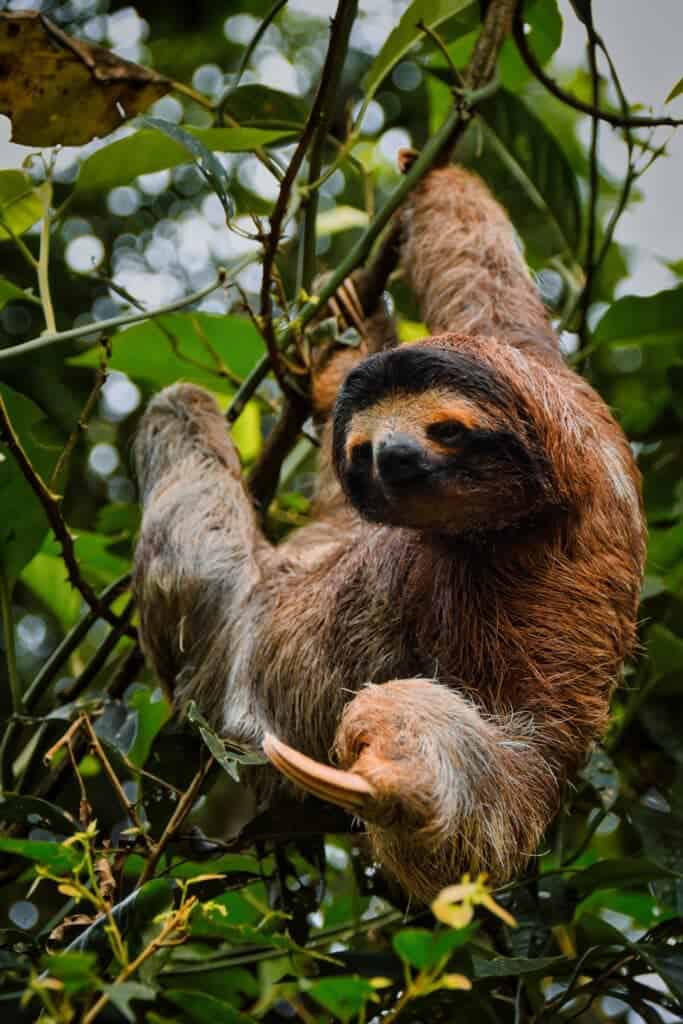
In what seems like a never ending perpetual state of relaxation, sloths have earned their reputation as one of the slowest animals on Earth. As we delve into the enchanting world of these arboreal mammals, we unravel the mysteries behind their leisurely pace, their habitats, dietary preferences, and the unique strategies they employ to navigate the challenges posed by predators.
The Unhurried Nature of Sloths:
Sloths are renowned for their unhurried movements, ambling along at a pace that makes a snail’s journey seem like a sprint. In fact, their average speed ranges from a mere 0.03 to 0.24 kilometers per hour. This leisurely lifestyle has led many to ponder the reasons behind their slow-motion existence.
Why Are Sloths So Slow?
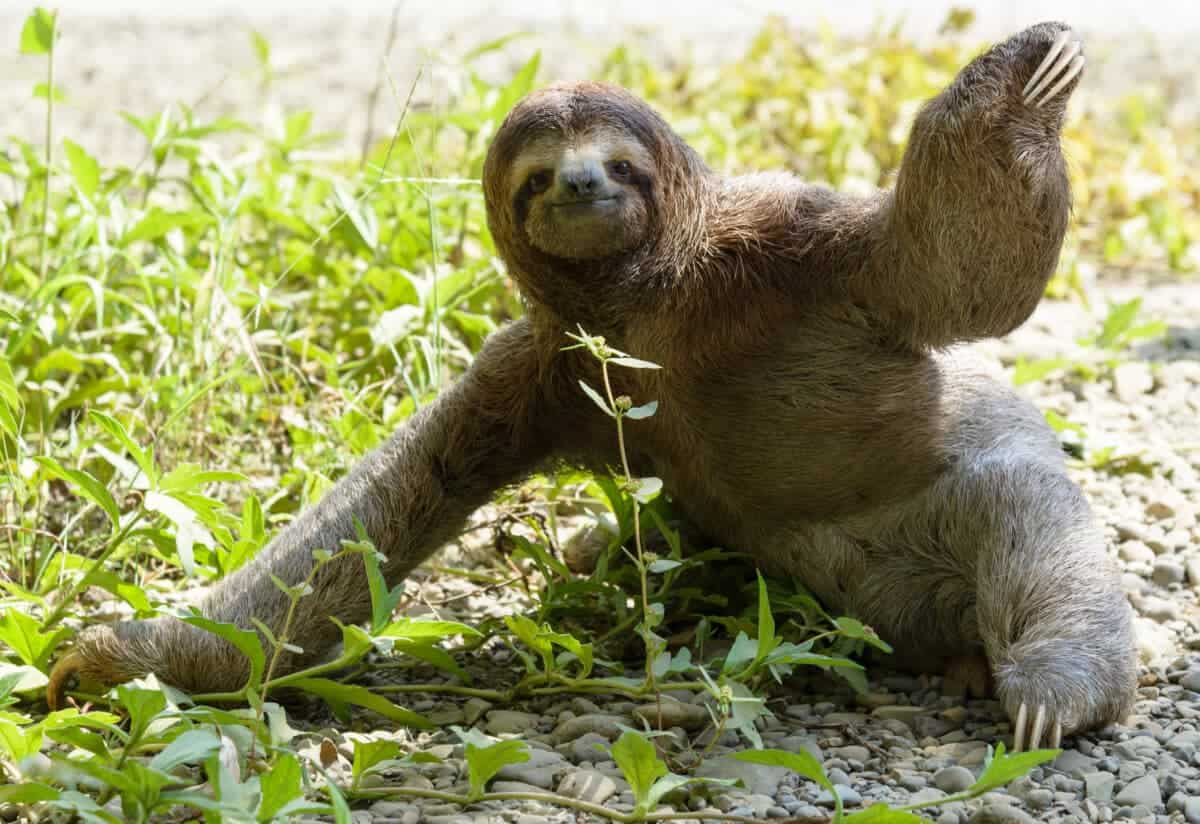
The sloth’s sluggish pace can be attributed to its physiological adaptations. With a low metabolic rate, sloths expend minimal energy, allowing them to conserve resources and maintain their laid-back demeanor. Their specialized slow-twitch muscle fibers contribute to their gradual movements, enabling them to sustain prolonged periods of inactivity.
Sloth are Slow, But what are their Habitats and Roaming Grounds?:
Sloths predominantly inhabit the lush canopies of Central and South American rainforests, where their slow-paced lifestyle becomes a strategic advantage. These arboreal creatures are perfectly adapted to life in the trees, using their long, hook-like claws to navigate branches with ease. Some species, such as the three-toed sloth, are known to cover sizable territories, while others, like the pygmy three-toed sloth, have more restricted ranges on specific islands.
Dietary Choices:
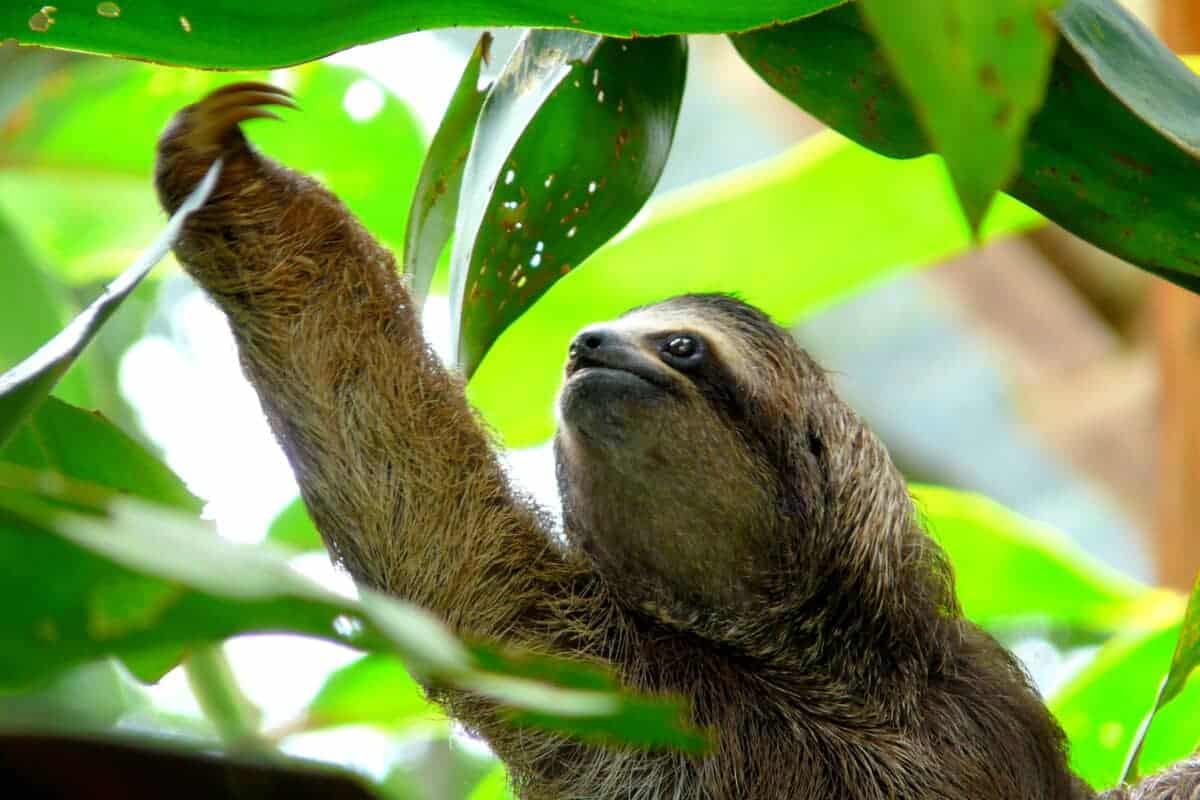
Despite their slow movements, they exhibit remarkable adaptations in their diet. The majority of a sloth’s diet consists of leaves, primarily from the trees they inhabit. Their slow metabolism allows them to extract sufficient nutrients from the tough, fibrous plant matter, although this diet lacks the energy density of other options. Periodically, sloths descend from their treetop abode to defecate, an activity crucial to their digestive process and the promotion of nutrient cycling within their ecosystem.
Facing Predators at Sloth-Speed:
While sloths may seem defenseless with their languid movements, they have evolved strategies to navigate the constant threat of predators. Their cryptic coloration, which blends seamlessly with the foliage, acts as a natural camouflage, making them difficult to spot. Furthermore, sloths are known to remain motionless for extended periods, relying on their inconspicuous appearance to evade detection.
Despite these adaptations, sloths face challenges from several predators such as harpy eagles, jaguars, and snakes. However, their elusive behavior and high vantage points in the canopy often serve as effective deterrents, enabling them to avoid direct confrontations.
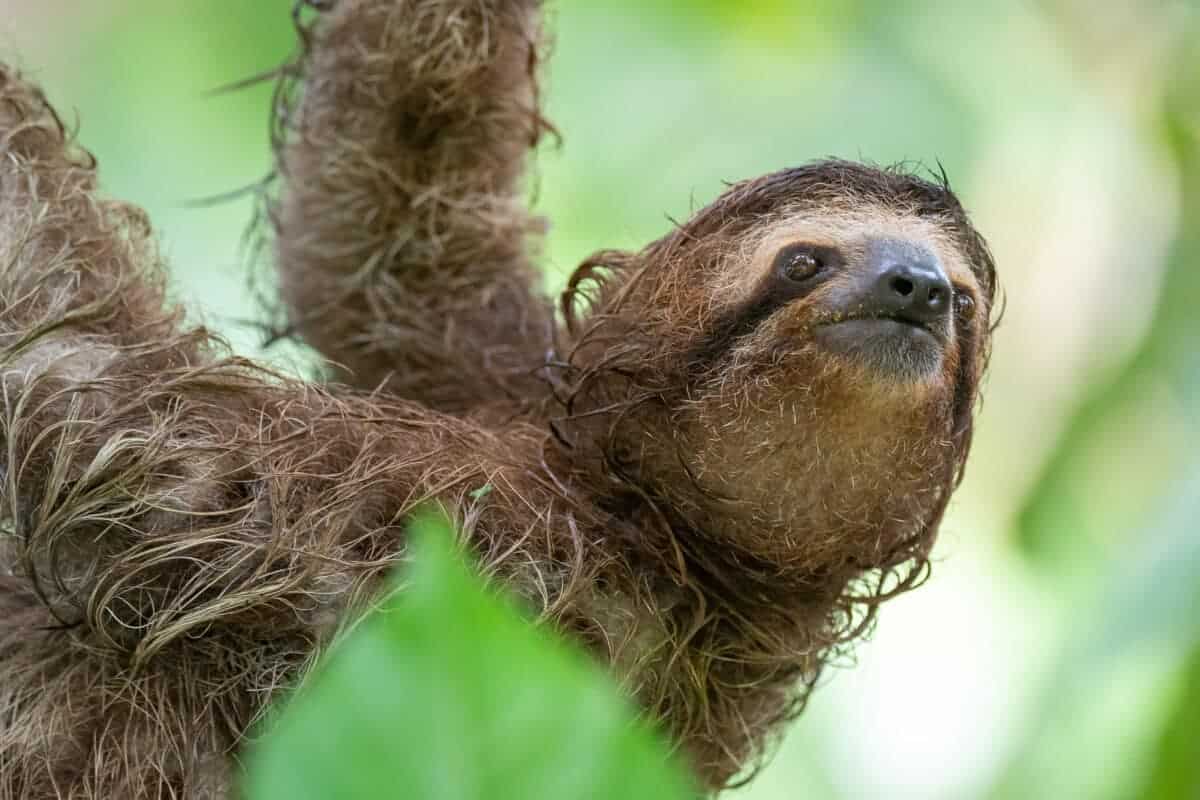
In conclusion, the enchanting world of sloths is a testament to the diversity of nature, showcasing the adaptability of creatures in their respective ecosystems. While their leisurely pace may seem counterintuitive in the face of survival challenges, sloths have mastered the art of slow living to thrive in their arboreal habitats. Whether hanging upside-down from a branch or leisurely munching on leaves, these fascinating mammals invite us to appreciate the beauty of life in the slow lane.
If you enjoyed this article, you may enjoy these:
Join our Forum for free today!

- Second American Killed by Elephant in Zambia This Year - July 22, 2024
- Elderly Man Kills Grizzly Bear in Montana - July 22, 2024
- Missing Cat Found Weeks Later, 40 Miles Away - July 21, 2024

